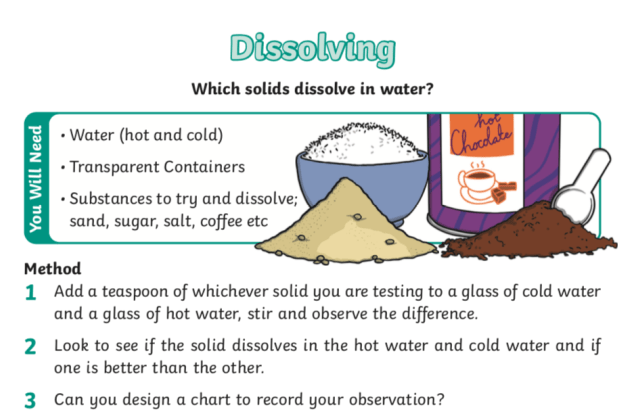
What are the Parts Of A Science Experiment?
Parts Of A Science Experiment

What is the Scientific Method?
The Scientific Method is a simple and effective way for scientists (and pupils!) to study and learn things about the world.
What are the five parts of a science experiment?
There are actually more than five parts of a science experiment, but for younger children, it's best to stick to the first five! Once they understand and remember these, it'll be much easier to teach them the next steps. Here are the five main steps of the Scientific Method:
- Observation - Observe something happening in the world.
- Question - Ask a question based on the observation.
- Hypothesis - Formulate a theory of why this observed event happens.
- Method - How are you going to find out the answer?
- Results - What happened? Was your hypothesis correct? Or did something else happens?
Let's look at each step in more detail, using an example from our teacher-made Science Experiments At Home resource! A simple dissolving experiment.

1. Observation
The observations about the world can be open-ended, this part of the experiment is important for getting children curious about their surroundings! In this dissolving experiment, the observation could be:
- Some solid materials dissolve in water.
2. Question
There can be no experiment without a question! If observation makes children curious, questions make them curiouser and curiouser. Questions make children analytical of their surroundings. It's good to let children come up with their own questions, so the more open-ended the observation is, the better! For our example, we could ask a simple question such as:
- Which solids dissolve in water?
3. Hypothesis
This is where you'd challenge your children to come up with an answer to the question. Ask them to finish the sentence: "I think...". The hypothesis step of the scientific method nurtures the children's rationale and problem-solving abilities. What hypotheses can we come up with for our experiment? Maybe:
- I think...Sand won't dissolve.
- I think...Sugar will dissolve.
- I think...Coffee will dissolve.
4. Method
How are you going to test out your hypotheses? This is when your children get hands-on and actually do the experiment! Maybe you could challenge your pupils to come up with their own method. But of course, there are tried and tested methods for most simple experiments. All of Twinkl's downloadable science experiment resources include an effective method to conduct the experiment. What could the dissolving experiment's method be? You guessed it:
- Add some solid material to water (hot and cold) to see whether it dissolves.
5. Results
So what happened after you did your method? Did the experiment produce the results that your children thought would happen? Or were they surprised to observe something different happen? Not only can you discuss the results with the class verbally, but it's a fantastic idea to record the results in a book! Not only should you record the results, but every part of the experiment. Our handy Scientific Method: Experiment Observation Writing Templates would be the perfect tool to do this! It has sentence prompts for the children to be inspired to write their report.
For our dissolving experiment, we could record results such as:
- My hypothesis was (correct/incorrect). As a result of the experiment, I learned that sugar dissolves in both hot and cold water. But it dissolves quicker in hot water.
For older children, you could even go on to research why certain solids dissolve quicker in hot water.
What's the history of the Scientific Method?
Francis Bacon (Philosopher) is thought to have recorded the scientific method sometime between 561–1626. That being said, the method wasn't invented by any one person and has in fact been used since ancient civilisation. Even though the parts of a science experiment usually include the five we discussed earlier, the full scientific method is disputed. This is why you'll hear different versions depending on who you ask! Other famous figures who contributed to today's understanding of the method was René Descartes and Isaac Newton.
Our top science experiments to try in the class or at home!
Ready-made and ready to print, our resources are real high-quality time savers! There are other versions available of our science experiments to download, to customise it to your needs.
- Do your children know how rain is made? Try this Cloud in a Jar experiment. Perfect for a rainy day!
- Teach your little ones about under the sea with our resource pack, bursting with exciting experiments!
- Do your children absolutely adore superheroes? Have no fear! Twinkl's Superheroes Science Experiments resource pack is here to save the day.
Common Errors in Science Experiments
- One of the most Common Errors in Science Experiments is human error. This means that the person doing the experiment does something wrong during the experiment, or when they record the results. For example, recording a measurement wrongly.
- Another is when there is a flaw in the design of the experiment. For example, tools that provide incorrect results.
- Environmental conditions also lead to errors in science experiments, like the temperature of the room affecting the materials used.
To read about the Common Errors in Science experiments in-depth, be sure to check out our Teaching Wiki page on Experimental Error.
 Home
Home  Membership
Membership  Customer Support
Customer Support  Create
Create  Blog
Blog 




















